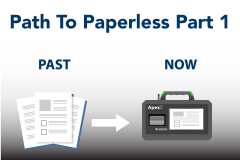In an ever changing world, we are constantly seeing new regulations and expectations. This is especially true in the area of computerized system compliance and validation. GAMP was designed to address these needs.
GAMP (Good Automated Manufacturing Practices) is a system designed specifically for suppliers and users in pharmaceuticals. GAMP certifies a system that produces quality products following a life cycle model. Following GAMP best practices, manufacturers are able to track and record their processes for certification.
These standards aim to improve compliance, quality, efficiency, and cost reduction. They were developed by pharmaceutical industry professions for pharmaceutical industry professionals!
They pertain to cleanroom classifications, of which there are several requirements. This article covers cleanroom classification bases, definition of cleanroom occupancy states, your risk based approach to cleanroom classification, and reclassification periods as defined by popular certifications.
Cleanroom Classification Basics
Classifying cleanrooms is essential for the peace of mind of your distributors and, quite likely, required. Often, these regulations are put into place by the Food And Drug Administration (FDA).
A classification lets people know your cleanroom is a certain level of clean. You can attain your classification through measuring the particle levels in different areas of your cleanroom. These locations should be chosen through a strategic risk based approach that we will cover later in this article.
Typically, you should use a portable particle counter when classifying your cleanroom. Even if you have a system of remote particle counters in place to monitor your cleanroom(s), you will need to test more areas during the classification process.
There are two primary classifications we use: ISO 14644-1:2015 and GMP Annex 1 2020 draft. ISO 14644-1:2015 has 8 classifications of cleanrooms (ISO 1 through 8, where ISO 1 is the cleanest and ISO 8 is normal room air). On the other hand, GMP Annex 1 has 4 grades (Grade A, B, C, and D, where Zone A is the cleanest).
There are three different types of cleanroom occupancy states: as-built, at-rest, and operational. When a cleanroom is as-built, that means all the infrastructure is in place. This includes all services being hooked up to the cleanroom. But there is no equipment, machinery, materials, or personnel.
When a cleanroom is at-rest, the cleanroom needs to be completely assembled and operational, but no personnel can be present. GMP Annex 1 specifies that, for a cleanroom to be at-rest, the personnel must be gone for at least 15 minutes.
Finally, when a cleanroom is operational, it means that the cleanroom is set up, in operation, with the appropriate number of personnel present.
It might seem trivial to be so concerned with where people are, but personnel is a top contributor to cleanroom contamination. With skin, hair, and clothing particles coupled with constant movement, humans contribute roughly 75-80% of contamination in a cleanroom.
Risk Based Approach To Cleanroom Classification
GMP Annex 1 2020 (draft) outlines what to look for in your risk based assessment to determine your cleanroom classification strategy, including air particle testing locations. Your risk assessment should be based on detailed knowledge of:
- process inputs,
- final product,
- facility,
- equipment,
- specific processes,
- operations,
- historical monitoring data,
- qualification data,
- and other relevant information.
Your entire assessment should be documented and your reasoning explained. You can demonstrate where personnel operate the most, where movement occurs, where high risk of contamination is, and more.
Once you conduct your risk assessment, you will be able to develop your risk based approach. This includes using the assessment to determine the optimal number of testing locations and where they are. Additionally, it shows you where you need to routinely monitor. You will monitor fewer locations than you use during classification, thus they need to be very strategic.
Cleanroom Reclassification Period
GMP Annex 1 2020 (draft) dictates that the maximum time between requalifications for Grade A and B zones is 6 months. For Grade C and D zones, that time period is 12 months. Requalification should also occur when…
- changes are made in the operational use of the room,
- setting parameters of the HVAC system,
- interruptions in the air movement which impacts the operation,
- or any special maintenance that affects the operation.
ISO 14644-1:2015 also specifies time frames for reclassification. It allows for periodic demonstration of compliance for at-rest and operational classification based upon a risk assessment of the application, which is usually annual.
For classification of air cleanliness by particle concentration, you should test annually. Depending on your risk assessment, the extent of the monitoring system, and data in compliance with acceptance limits or levels defined in the monitoring plan, you may be able to extend this.
Are You Ready To Learn More About GAMP?
We get it – this industry is constantly evolving with complex requirements, regulations, and obstacles. It is too easy to get lost in all the legalese.
That is why we are here to break it down for you in simple and easy terms. Every month, we host a free webinar for industry professionals and decision makers. This month’s webinar will cover cleanroom classification basics, ISO 14644 part 1, its application in cleanrooms, common mistakes in cleanroom classification, how to correct those mistakes, a risk-based approach to location selection, and a proper report format to meet standard requirements.
This webinar hosted by Haşim Solmaz. Haşim is licensed and certified in USP General Chapter 797 Pharmaceutical Compounding – Sterile Preparations, Risk Assessments for Cleanroom and Controlled Environments, New ISO 14644-1 and ISO 14644-2 Standards Application of ISO 14644-3, and many more. See the webinar on the knowledge center!
If you would like to register for free webinars, register here!


